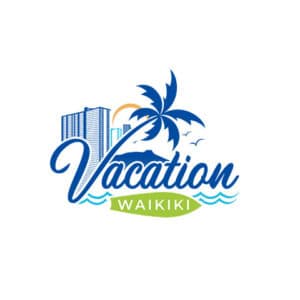
If Waikiki is your home base on Oʻahu, you usually don’t need a rental car—and in many cases, you’ll be happier without one. Waikiki is compact, walkable, and packed with restaurants, beaches, shops, and attractions that are easy to reach on foot. Add in ride-shares, trolleys, and Honolulu’s public bus system, and you’ve got plenty of ways to explore without ever touching a steering wheel.
So… do you need a rental car in Waikiki?
Not for most trips. Waikiki is only a few square miles, and it’s designed for visitors to move around without driving. A rental car makes the most sense if you’re planning multiple island adventures (North Shore, Kailua, Kualoa Ranch, Hanauma Bay, etc.), traveling with a group, or want maximum flexibility on your own schedule.
Let’s break it down so you can choose what fits your vacation style.
The quick answer: rent a car only if your itinerary goes beyond Waikiki
You’ll probably skip the car if you:
- Plan to spend most of your time in Waikiki (beach days, shopping, dining, luaus)
- Have a shorter trip (3–5 days) with only 1–2 excursions
- Don’t want to pay for parking every night
- Prefer to relax instead of navigating traffic and tight city driving
You’ll probably want a car if you:
- Want early-morning freedom for sunrise hikes or uncrowded beaches
- Plan to visit the North Shore, Windward Coast (Kailua/Lanikai), or West Side
- Have kids + beach gear + a “we’re bringing everything” vibe
- Want to bounce between stops (lookouts, food trucks, beaches) all day long
Why Waikiki is easy without a car
Waikiki is built for strolling. The beach is never far, and most hotels sit within a few blocks of:
- Waikiki Beach (and its many sections)
- International Market Place
- Royal Hawaiian Center
- Waikiki Beach Walk
- Restaurants, coffee shops, nightlife, and casual eats
And when your feet are tired (because they will be), you’ve got options: ride-shares, taxis, trolleys, and public transit.
Getting around Waikiki without a rental car
1) Walk it (the best “transportation” in Waikiki)
Walking gives you the best version of Waikiki: street performers, ocean breezes, little shops you didn’t plan on, and sunset views that sneak up on you.
Pro tip: Pack comfy sandals and one pair of real walking shoes. Waikiki is flat and easy—until you decide you want to walk “just a little farther” toward Diamond Head.
2) TheBus + HOLO card (budget-friendly and surprisingly useful)
Honolulu’s public transportation system, TheBus, is one of the easiest ways to reach popular spots without renting a car.
- Adult fare is $3.00
- HOLO card includes free transfers within 2.5 hours, plus a $7.50 daily cap (so once you hit the cap, you can ride more that day without extra charges). (City and County of Honolulu)
- The City’s posted HOLO pass options include a 3-day pass ($20) and 7-day pass ($35). (City and County of Honolulu)
(You may see slightly different pass pricing on TheBus site depending on the page and effective date, so it’s always smart to double-check the official fare pages before your trip.)
Airport note: Hawaii’s airport site confirms TheBus “W Line” runs between HNL and Waikiki, stopping through Downtown/Kakaʻako/Ala Moana. (Hawaii Airports)
3) Bikes and Biki bike share (fun + scenic + efficient)
If you’re staying near the beach and want a breezy way to move around, Biki is a great option. It’s especially perfect for cruising the Ala Wai Canal, Kapiʻolani Park, and the flatter parts of town.
Biki offers visitor subscription options like:
- Voyager ($30/month) (unlimited 45-minute rides)
- Commuter ($25/month) (unlimited 30-minute rides) (Biki)
4) Ride-shares and taxis (easy for quick hops)
Uber/Lyft are plentiful around Waikiki and can be a great way to:
- get to dinner reservations without sweating through your shirt
- avoid waiting for a bus
- travel in a group (split the cost!)
Taxi tip: If you take taxis, confirm approximate cost before you hop in, and tip around 15–20% if service is good.
5) Trolleys and tours (low effort, high fun)
Waikiki’s trolley routes and island tour operators can be the “vacation mode” solution: you get transportation, narration, and stops—all without parking drama.
Tours are especially handy for destinations where parking is limited or rules are strict (hello, Hanauma Bay reservations).
The real reason people regret renting a car in Waikiki: parking (and the sneaky add-on costs)
Rental cars can look cheap until you add everything up. Waikiki is famous for two things: gorgeous beaches… and expensive parking.
Here’s what tends to tip the scales:
- Hotel parking can be very pricey—some Waikiki hotels charge $50+ per night (and higher isn’t rare).
- Traffic can be slow and unpredictable, especially around peak commute times. TomTom’s Honolulu traffic data shows a typical 6-mile drive can average around 17–18 minutes, depending on congestion.
And don’t forget:
- fuel costs
- resort fees (many properties still have them)
- taxes and surcharges
- time spent circling for garages, validating tickets, and navigating one-way streets
In other words: you can absolutely rent a car—but you’ll want to do it with eyes wide open.
When a rental car does make sense
If your heart is set on exploring the island beyond Honolulu, a car can be a joy—windows down, music up, coastal views everywhere.
A rental car is worth it if you’re doing several of these:
North Shore day
Food trucks, surf beaches, scenic stops, and “let’s pull over right here” moments.
Windward Coast + Kailua/Lanikai
Beach hopping, lookouts, and a relaxed small-town feel.
East Side scenic drive
Halona Blowhole, Sandy Beach, Makapuʻu Lookout—this stretch is made for spontaneous stops.
“Reservation destinations”
- Hanauma Bay (closed Mondays & Tuesdays, and reservations are part of the plan) (City and County of Honolulu)
- Diamond Head (entry/parking reservations required for non-residents) (Hawaii DLNR)
The best compromise: rent a car only for the days you need it
This is my favorite strategy for most visitors.
Example plan:
- Days 1–3: Waikiki beach + dining + shopping (no car)
- Day 4: Rent a car for North Shore
- Day 5: Back to Waikiki (no car)
- Day 6: Rent a car for Kailua + East Side lookouts
This way, you avoid paying nightly parking for a car that mostly sits in a garage while you’re… walking to the beach anyway.
Getting from Honolulu Airport (HNL) to Waikiki: best options
TheBus “W Line” (budget pick)
Hawaii’s airport site notes the W Line runs from HNL to Waikiki, passing Downtown, Kakaʻako, and Ala Moana. (Hawaii Airports)
Also note baggage rules exist, so this option is best if you pack light. (Hawaii Airports)
Taxi (simple, direct)
Charley’s Taxi lists a Waikiki flat rate of $36 for airport trips (good for avoiding surprise costs when traffic is heavy). (Charley’s Taxi)
Shuttle services (easy with luggage)
Shared shuttles can be convenient, and Roberts Hawaii notes taxi fares (without traffic) are often in the $40–$45 range and that Waikiki parking frequently adds up nightly. (Roberts Hawaii Airport Transfer Services)
FAQ: common rental car questions for Waikiki
How bad is traffic in Waikiki/Honolulu?
It varies, but it can absolutely slow down your day—especially during commute hours and around major corridors. Honolulu is regularly flagged as a congested U.S. city in major traffic datasets.
What’s the best vehicle to rent on Oʻahu?
For most visitors: a compact or mid-size car. Waikiki parking spaces and garages can be tight, and you’ll appreciate something easy to maneuver.
Can I rent a car if I’m under 25?
Rental policies vary by company, but many require drivers to be at least 21, and drivers under 25 often pay a young-renter surcharge and may be limited to certain car classes.
Bottom line: choose the option that matches your vacation rhythm
If your dream trip is beach mornings, shopping afternoons, and sunset dinners within Waikiki, skip the rental car and enjoy the freedom (and savings).
If your dream trip is “let’s drive the whole island and stop wherever the view is pretty”—then rent a car for a day or two, not necessarily the whole week.
Either way, you’ll be in paradise. The goal is to keep your transportation plan feeling like a help—not a hassle.

